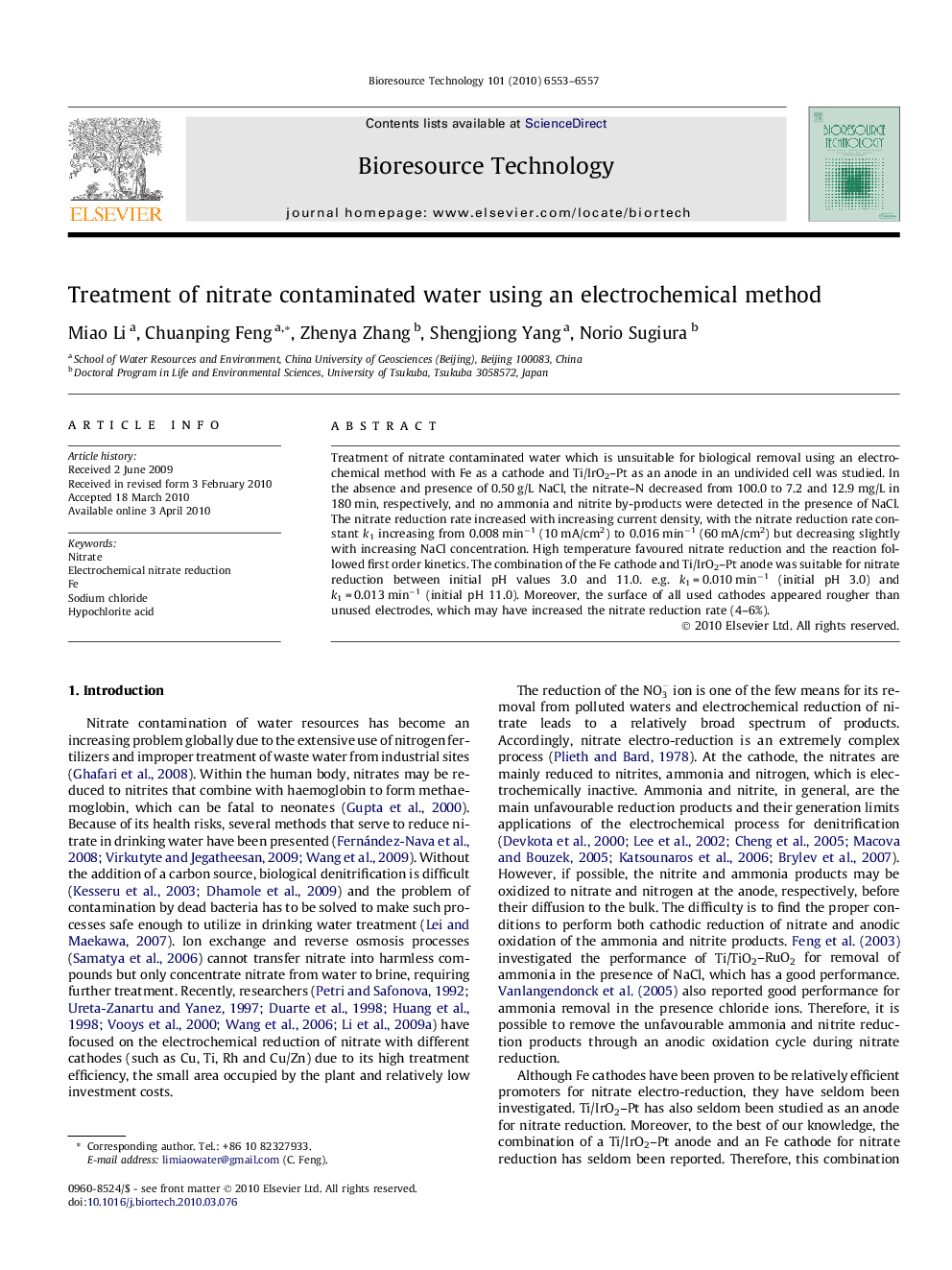| Article ID | Journal | Published Year | Pages | File Type |
|---|---|---|---|---|
| 683232 | Bioresource Technology | 2010 | 5 Pages |
Treatment of nitrate contaminated water which is unsuitable for biological removal using an electrochemical method with Fe as a cathode and Ti/IrO2–Pt as an anode in an undivided cell was studied. In the absence and presence of 0.50 g/L NaCl, the nitrate–N decreased from 100.0 to 7.2 and 12.9 mg/L in 180 min, respectively, and no ammonia and nitrite by-products were detected in the presence of NaCl. The nitrate reduction rate increased with increasing current density, with the nitrate reduction rate constant k1 increasing from 0.008 min−1 (10 mA/cm2) to 0.016 min−1 (60 mA/cm2) but decreasing slightly with increasing NaCl concentration. High temperature favoured nitrate reduction and the reaction followed first order kinetics. The combination of the Fe cathode and Ti/IrO2–Pt anode was suitable for nitrate reduction between initial pH values 3.0 and 11.0. e.g. k1 = 0.010 min−1 (initial pH 3.0) and k1 = 0.013 min−1 (initial pH 11.0). Moreover, the surface of all used cathodes appeared rougher than unused electrodes, which may have increased the nitrate reduction rate (4–6%).
